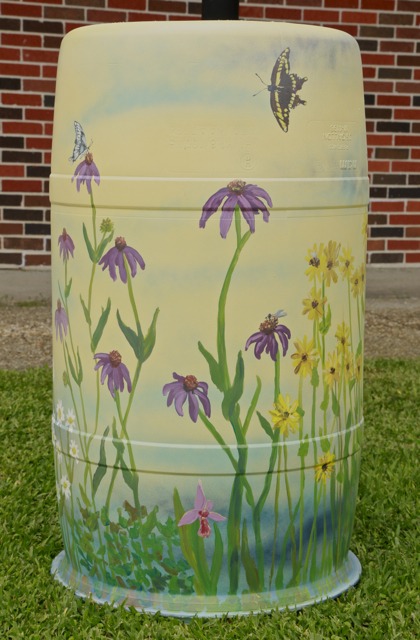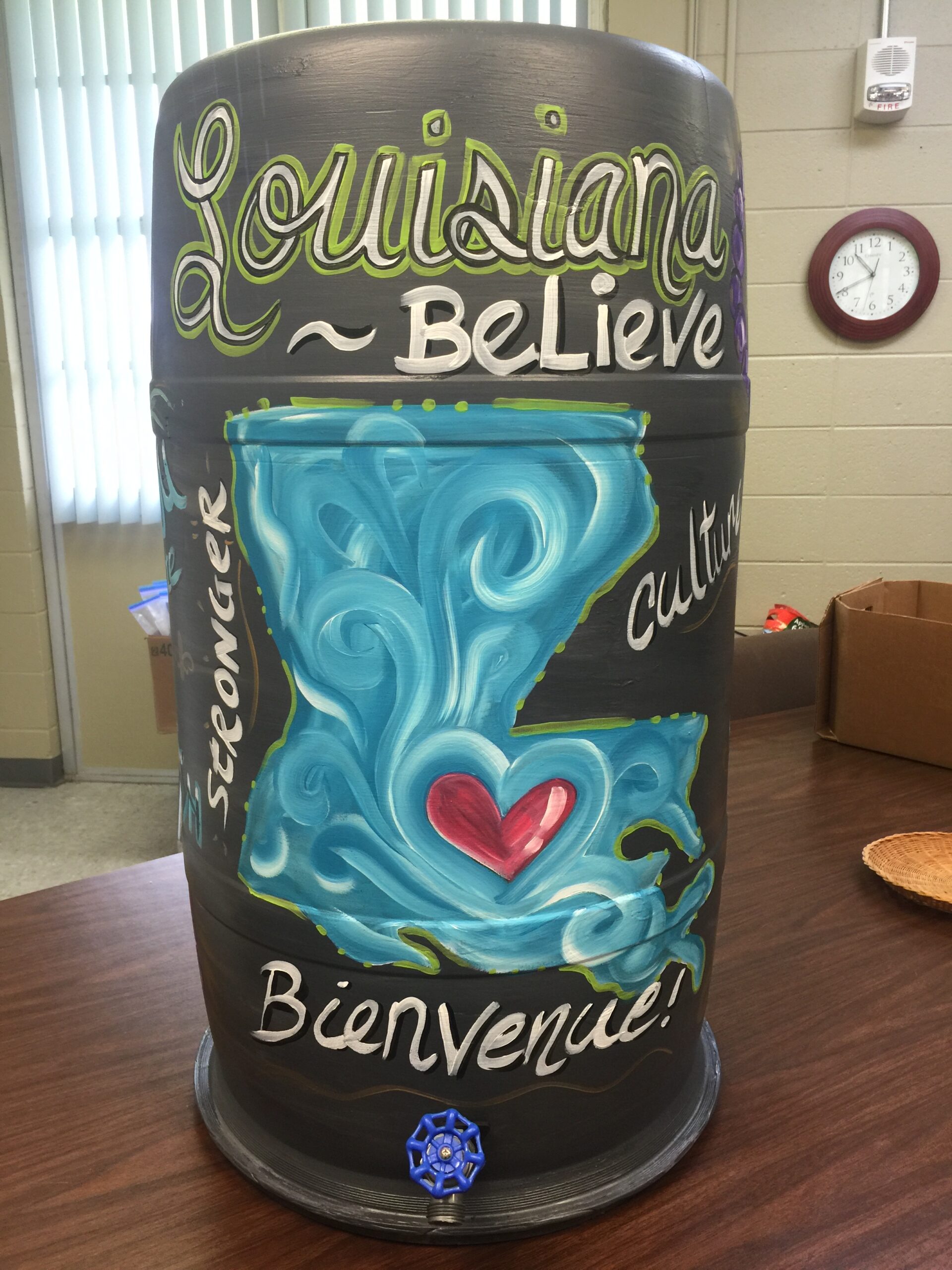
Rain, Rain, Come and Stay?
How collecting rainwater can help you and our environment.
In south Louisiana, as many residents know, rainwater can be both our enemy and our friend. While rainwater is essential to keeping our environment stable, it has also been a major obstacle with erosion, flooding, and polluted stormwater runoff.
As our world becomes more urbanized, the natural areas of our environment are disappearing. This urbanization poses several threats to our environment and wildlife, but it also has an impact when it comes to rainwater and storms.
How has urbanization impacted our rainwater?
When rainwater hits natural land, the water seeps into the ground where it is naturally filtered through the sediment and stored, resulting in groundwater recharge. Groundwater is important for water storage and plants, but it’s even more important in areas like our estuary, where groundwater helps to hold up the land. But, as our cities grow larger, and natural areas of land grow smaller, more and more of the rainwater is hitting man-made, impervious structures like roofs, roads, and parking lots. These non-porous structures leave the rainwater with nowhere to go, creating stormwater runoff. This runoff eventually runs into storm drains, or into nearby water bodies like lakes or bayous.
With occasional rain, our water systems have no issue keeping up, but as we’ve often seen during tropical storms or hurricanes, major storms can dump so much rainwater on one area, that our water systems can’t keep up — resulting in often catastrophic flooding. Additionally, when too much stormwater runoff hits our water treatment facilities, the overflow is pumped directly into natural water bodies. One of the biggest issues with this is this water is often highly polluted.
When rainwater cannot drain into the ground, it flows across roofs, polluted highways, and parking lots; picking up trash, chemicals, and other pollutants along the way. This polluted water then ends up in our natural waterways, posing a threat to our drinking water, and all the wildlife that inhabits our waterways.
How can you help?
While we obviously can’t stop the rain from coming, we can put the rain to good use with simple rainwater collection.
Our ancestors have collected rainwater for thousands of years, but as cities have urbanized and access to running tap water is readily available, fewer homes have implemented this ancient practice.
Collecting rainwater is not only simple, it has numerous benefits for both the environment and your household:
- Even a small home can collect an immense amount of water. For example, on a 1,000-square foot roof, for every inch of rain that falls, you can collect 600 gallons of rainwater from your gutter system!
- Use your collected rainwater to water the lawn, or the outdoor and indoor plants. Rainwater is totally natural, and free of the many chemicals that are used to treat our tap water like chlorine or fluoride — which can be harsh on your plants.
- Cut back on your water bill and usage. Treating rainwater at our municipal treatment sites produces greenhouse gases, like carbon dioxide. If you’re using less treated water, you’re reducing carbon emissions!
- By collecting rainwater at your home, you reduce the amount of stormwater running into storm drains to be treated. This reduces the load on our treatment systems — helping to minimize the chance of overflow or flooding.
How do I collect rainwater at my home or business?
Thankfully, collecting rainwater is easy and inexpensive. Two of our favorite ways to collect rainwater is with a rain garden or rain barrel.
Rain gardens are a beautiful way to turn your lawn into an oasis that helps to collect rainwater. To begin, choose a naturally low-lying area of your yard — a place that rainwater tends to collect after a large storm. Map out the area of your rain garden, and dig a shallow hole in this area, sloping to about 1 foot deep in the center, creating a swale. In your swale, plant native, wetland plants. That’s it! Now you have a rain garden that is not only beautiful, but helps tremendously with stormwater runoff.
A common misconception of rain gardens is that they’ll be a breeding ground for mosquitoes, but rain gardens are meant to drain within 24-48 hours — not long enough for mosquitoes to breed. You can even dig small channels around your yard in places where water typically does pool, to drain into your rain garden, thus leaving fewer spaces for mosquitoes to breed. We recommend using crushed gravel and rocks in and around your rain garden and channels to help prevent erosion.
Not interested in gardening or don’t have the space? No worries, try a rain barrel! Rain barrels are a super easy way to collect rainwater — all you’ll need are a barrel (like a trash can or fertilizer drum), a fine mesh screen and a water spout. First, you’ll want to install your downspout on the bottom of your barrel, a few inches from the bottom. Next, cut a hole in the top of your barrel, and install your mesh screen to keep debris and mosquitoes from entering the barrel. That’s all it takes to begin collecting rainwater!
Looking to collect more water? Your roof and gutters collect a lot of water! Tie your gutter system into your rain barrel with a diverter system to collect all of the rainfall that hits your roof, but be sure to add a screen to prevent debris from clogging the water flow.
Now you’re all set up to begin collecting rainwater! Hook up a hose to your rain barrel to use your free rainwater to water plants, the lawn, or even wash vehicles.
Other ways to help:
- Ahead of large storms, clear any loose or dead branches from trees and pick up any other debris that could end up blocking or clogging a storm drain.
- Regularly clean storm drains around your home and neighborhood to ensure the drains are clear to collect stormwater.
- To conserve water, when watering your lawn or outdoor plants, be sure to water in the early morning or late evening to ensure the water doesn’t evaporate in the heat, resulting in less watering overall.
For more information about rainwater harvesting and collection, plus many other ways you can make small changes in your yard that make a big impact, check out our Improving Water Quality Resident’s Guide.










